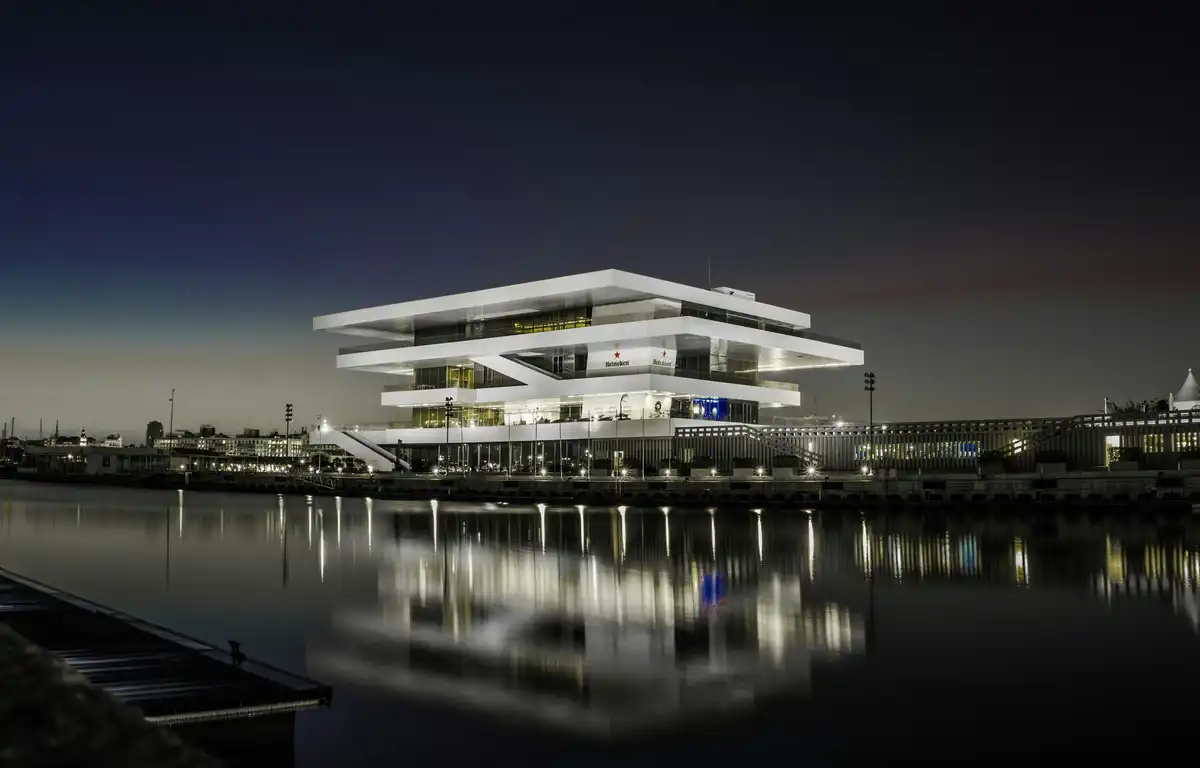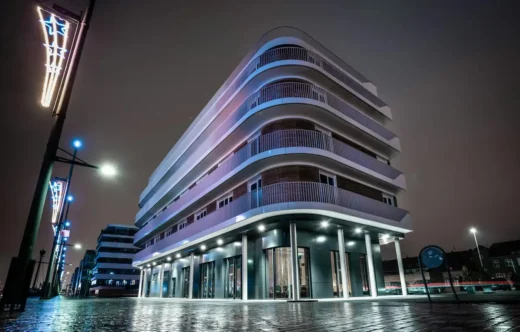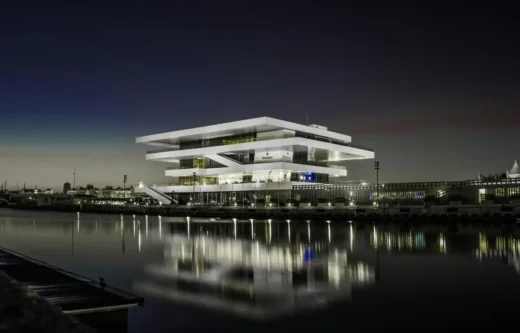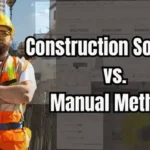Commercial building construction and development uide, Residential buildings, Property security system
What Goes into the Construction and Development of a Commercial Building
23 September 2025
Building an office takes time and careful planning. You start with an idea, but it needs to be implemented properly to become an integral part of your build.
At the start, there are questions about the site itself. You have to consider how suitable the ground is and how accessible the office needs to be. These small details can significantly shape your project’s longevity and reliability.
Then comes thinking about the people who’ll be working on your office building’s construction. Workers need safe spaces to move around and places to rest. Visitors need clear entrances and straightforward directions. Getting these right helps the building process stay organised and continue smoothly.
Work on a construction site moves constantly. Teams handle materials and operate machines throughout the day, so keeping everything coordinated takes a lot of focus and thought.
Small details matter a lot. How equipment is stored and where tools are placed can change how smoothly the work progresses. Temporary structures and storage areas also need attention to keep the site organised.
Additionally, the conditions around the site influence daily work as well. For instance, weather and soil can affect how tasks are completed. Teams need to adjust quickly and find practical ways to keep the project moving forward.
With all of this in mind, let’s take a closer look at the main stages that turn the idea of an office building into a fully functional structure.
Site Preparation for the Build
Preparing the site is the first major step in any office construction project. You need to make sure the ground is stable and suitable for the building. This usually means clearing debris and levelling the area. Checking the soil also helps ensure the foundations will be secure. It’s important to carefully prepare your site to prevent problems once the construction process begins.
Once the site is ready, the construction team brings in materials to support the groundwork. Choosing reliable suppliers, like Storefield Aggregates, is important for strong and consistent materials. These aggregates are what form the base for everything from foundations to drainage systems.
Planning access and logistics is another key part of preparation. Builders must ensure that their site has dedicated paths for machinery and storage areas for equipment.
Amidst all this, site managers also need to ensure that safety doesn’t take a backseat during the planning process. Workers need secure areas and clear walkways to move around safely. This also helps prevent safety compliance issues down the road, and once that’s done, an office building project is ready for the next stage of the construction process.
Surfacing and Access Infrastructure
The next step is to focus on laying the right aggregates for the surface of your office building. You must carefully plan out roads and paths to allow machinery to move easily. What’s more, this ensures that your workers can carry out their tasks without worrying about tiptoeing around the site. As a result, you can expect your team to be more productive and safe throughout the project.
The choice of materials is very important at this stage. Many construction teams work with reputable tarmac contractors to create durable driveways and access roads that can handle heavy loads. Smooth and well-prepared surfaces make it easier to move building materials and reduce wear on machinery over time.
Access planning also considers daily operations on the site. Teams need clear routes for deliveries and spaces where vehicles can park without getting in the way of ongoing work. Workers also need safe paths to move around, and thinking about this early prevents delays and accidents later on.
It’s easy to spot bottlenecks in a construction site where the surfacing and access infrastructure aren’t maintained to a high standard. However, if you don’t hear much from your team about logistical issues on site, it’s often because you planned the site well from the get-go and took the right measures to make their daily tasks easier.
On-Site Welfare Facilities for Workers
Every construction team needs a dedicated space where they can take breaks and refresh themselves. But on a busy site, how exactly do you ensure something like that? By providing temporary welfare facilities to help them maintain energy and focus throughout long days on site.
We recommend that you hire welfare trailers to provide these essential spaces. These trailers consist of changing rooms, seating areas, a generator, a drying room, and a kitchenette, making it easier to support your team without permanent structures.
Planning the location and number of welfare units also plays a significant role in site organisation. While they should be accessible, ensure that you’re not placing them in the way of heavy machinery or daily deliveries.
With these provisions in place, your team morale stays high and your project timeline remains on track.
Smart Technology Integration
Alongside these physical stages, technology plays a constant role in keeping a construction site organised. Nowadays, a wide range of software is available to track deliveries and schedules, allowing everyone on your team to stay on the same page. This makes it easier for managers to plan daily workloads and for workers to focus on their daily tasks.
Some technology also improves safety. Motion sensors and smart lights can make sure work areas are bright enough, and equipment trackers help your team know where machines are kept. This prevents occupational hazards and saves the time that your team would have to spend searching for equipment.
Additionally, smart systems installed during construction, like automated lighting and heating, ensure that the office building remains safe and comfortable all the time.
Securing Office Entrances
Once everything we’ve mentioned above is done, securing the entrances becomes essential. Well-planned entry points guide workers and deliveries efficiently across the site and reduce unnecessary movement that could slow progress. Clear entrances also help maintain safety during busy construction days.
Choosing strong and reliable doors for the site is important. For instance, if your project requires door maintenance or repairs during construction, connecting with a door repair company in Northants can help keep temporary structures secure and functioning properly. This ensures that materials and equipment remain protected while work continues smoothly.
That said, security planning goes beyond just the doors. Controlled access points and barriers can help protect areas with valuable equipment or sensitive materials. Organising these elements carefully makes it easier for teams to move around safely and follow the site’s instructions.
Having entrances secured and well-organised improves overall site efficiency. Workers can focus on their tasks, deliveries run on schedule, and management can keep operations under control. With entrances fully secured and access points clearly defined, the construction process can continue seamlessly in an organised manner.
To Sum Up
Every step in constructing an office affects how smoothly the work moves. Careful attention to the site and planning daily operations beforehand helps prevent delays and keeps progress steady.
Supporting the team on-site makes a significant difference as well. Having spaces to rest and clear areas to move around keeps your team focused and makes their daily jobs feel more manageable.
Good organisation throughout the project shapes the quality of the final building. Thoughtful planning and practical solutions allow the construction to run efficiently and create an office that will function well for many years to come.
Comments on this guide to Commercial building construction and development article are welcome.
Architecture

Photo by Lisa Anna on Unsplash
Contemporary Scottish Capital Property Designs – recent architectural selection below:
New National Centre For Music Edinburgh
British Medical Association HQ Edinburgh
Comments / photos for the Commercial building construction and development advice article page welcome.






